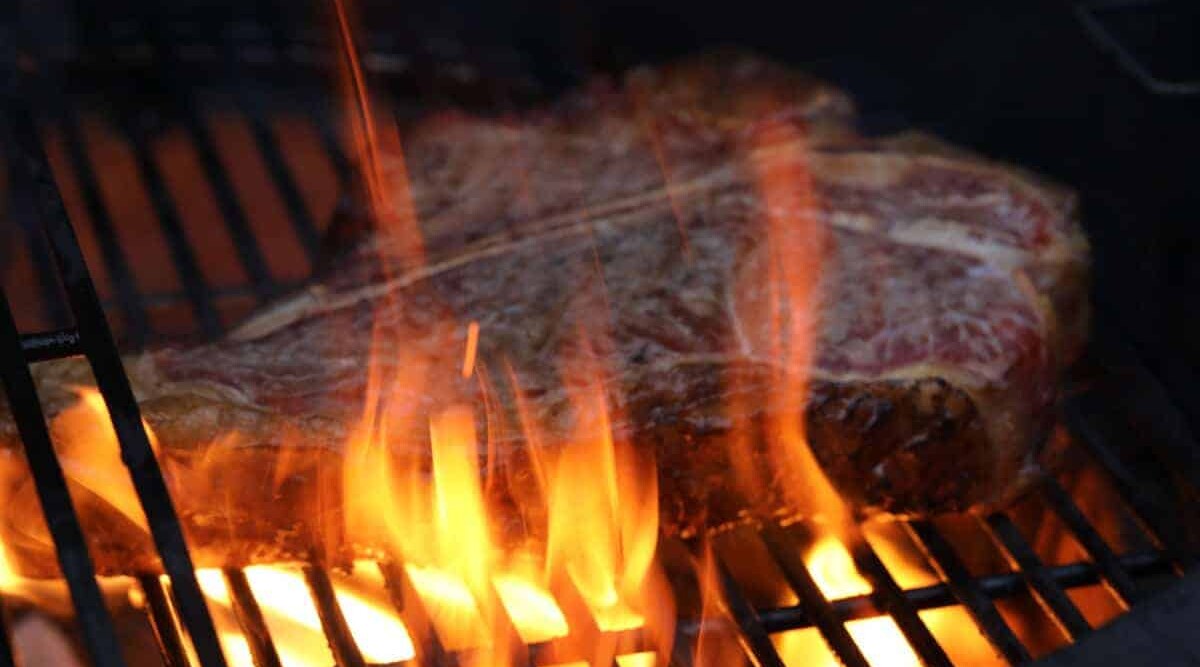
If you’re a frequent griller then it’s likely you’re familiar with flare-ups.
The flames can creep up on you like a forest fire by starting small and growing quickly. And, if the grill has too much grease and carbon built up, now you have a serious grease fire, and it can be catastrophic.
However, flare-ups are preventable so don’t let them deter you from enjoying fabulous steaks and burgers.
Understanding its characteristics, what’s causing it and how to handle it will prevent disaster and keep you safe. And this is what we cover in this article.
Can you avoid all flare-ups during grilling? No, unless you’re cooking fat-free foods. But, what good is barbecuing meat without a little fat with your chicken, pork, steak, and hamburgers, right?
Jump to:
- 1 What is A Flare-Up?
- 2 Dos and Don’ts To Avoid Flare Ups While Grilling
- 3 Things You Should Never Do to Tackle the Flames
- 4 Consider Reducing Fat Content Before Grilling
- 5 Preventing Flare-Ups on A Gas Grill
- 6 How to Control Flare-Ups On a Gas Grill
- 7 Preventing A Flare Up on A Charcoal Grill
- 8 How To Control Flare Ups On A Charcoal Grill
- 9 Always Be Prepared In Case It Happens to You
What is A Flare-Up?
It is a burst of high, intense flames in your grill. It usually starts with fat dripping from the meat onto the coals or gas burner, collecting and then igniting, causing a large burst of fire.
Occasional drips are generally not a problem. However, if the flames from dripping fat ignite the old built up grease and carbon in all other areas inside the grill, that’s when you can have a big grease fire.
Some Characteristics of Flare-Ups
- A fire burning inside the grill that spreads rapidly
- High flames with a lot of smoke and black soot
- The flames do not subside even when you remove the meat, turn off the gas and close the lid.
Some Causes Include
- Dripping from oily meat marinades
- Fatty meats like burgers, rib-eye, bacon or chicken with the fat still attached
- The temperature is very high
- Built up grease and carbon on the grates and other parts
Although a flare up could happen from lack of maintenance, usually it starts when placing meat on the grill or flipping it. Typically, it dies down quickly. If it doesn’t, you need to move the meat away from the flames until it goes out.
Let’s look at ways to prevent a flare up before it can get out of hand.
Dos and Don’ts To Avoid Flare Ups While Grilling
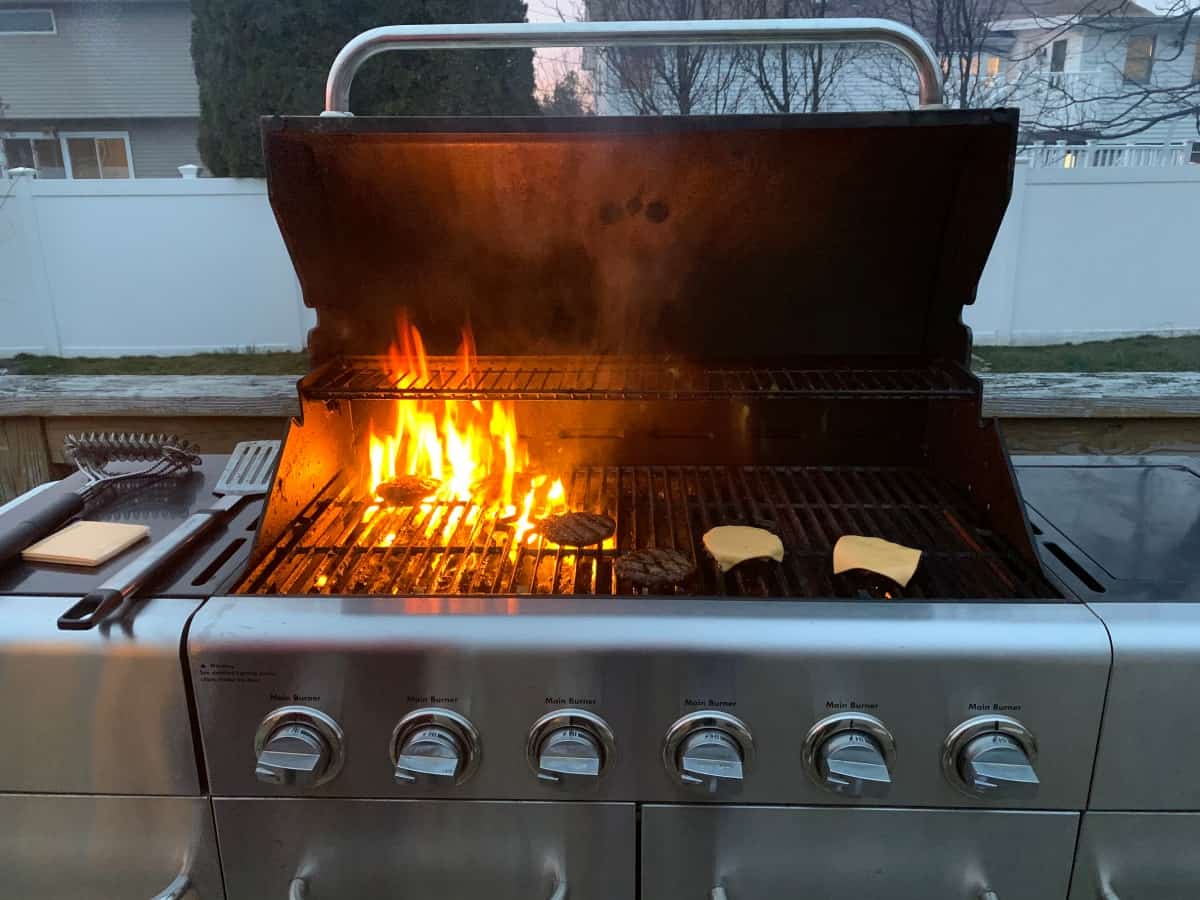
- DON’T keep flipping the burgers and steaks too often. You’ll lose more of the juice and fat, making your meat dry and fueling the flames.
- DON’T puncture your food, like sausages, to see if they’re cooked. The juice and fat will gush out potentially catching fire.
- DON’T press your burgers with a spatula onto the grate. You’ll just squeeze out all the juice and flavor, and will cause a big flame in the process. There is absolutely no benefit to doing this.
- DO close the lid while cooking to prevent flare-ups because there’s less oxygen to burn. Another benefit, the heat is more evenly distributed around the food, and not just from below.
- DO trim excess fat from steaks and chops, and pull off any fat from chicken before you grill.
- DO burn off any old grease and brush your grill grates and the inner walls of your grill before cooking — Or even better and easier, after each grilling session.
Things You Should Never Do to Tackle the Flames
In the event there’s a flare up, here is the list of things not to do:
- Never use water to put out a grease fire. I’ve said you could use a squirt bottle on small flames on charcoal grills, and that’s true. But, if your flare-up is more intense and getting out of control, don’t ever use water.
- If it’s a gas grill, your number one priority is to turn off the gas. If for some reason the flames are surrounding the supply hose or tank valve, leave the area immediately and call 911.
- Don’t leave the lid open. Close the lid and vents to cut off the oxygen. This will usually extinguish it.
- Don’t try to move a burning grill. You may be tempted to move it away from the house or combustible area, but chances are you will get hurt, or the grill will tip over and spread the flames even faster.
Consider Reducing Fat Content Before Grilling
We all know that you can’t trim fat from hamburger, but you can trim your steaks or pork chops to a quarter inch of fat on the outside to reduce the amount of melted fat dripping into your grill.
You can also buy or make a leaner mixture of hamburger. The leanest hamburger meat is 90/10 or 95/5. The larger number is the percent of lean meat and the smaller number the percentage of fat.
Of course, if you want a juicier burger you will want more fat, typically 80/20 is the sweet spot, though some like to go 70/30. However, with more fat, there is a greater chance of flare-ups.
Preventing Flare-Ups on A Gas Grill
Unlike charcoal, on gas grills you can very quickly turn off the gas and let the flare up burn itself out. But, the convenience of gas can also contribute to the lack of maintenance. It’s easy to turn off the gas, close the grill and forget about the grease build up.
Most gas grills have a “V” shaped metal diffuser that fits over the burners to prevent the dripping fat from plugging the burner holes. Some grills use lava rock for this purpose. The diffusers or lava rock and the walls need to be cleaned and degreased regularly to prevent grease and carbon build up.
Use the same “Safe-Zone” Method as a charcoal grill of moving your food to a safe zone should the flames get too high.
And, if you haven’t used or cleaned your grill in a while, here is a quality video on how to thoroughly clean your gas grill.
How to Control Flare-Ups On a Gas Grill
Gas grills are easier to control than charcoal. Here are three steps to putting out a flare-up:
- Turn off the burners using the knobs if it’s safe to do If the knobs are too hot to touch, use tongs.
- Once the gas is off, smother the fire with baking soda, salt or even sand if that’s all you have.
- Close the lid and vents to cut off the oxygen.
Here is an excellent professional video by Char-Broil on preventing and stopping grease fires in your gas grill.
If it’s still burning after 30 seconds and popping out of the vents, then use a fire extinguisher.
If you don’t have an extinguisher and the fire is so large or your gas tank is burning, GET OUT OF THE AREA IMMEDIATELY AND CALL 911!
NEVER THROW WATER ON A GREASE FIRE! The burning fat floats and will quickly spread everywhere. This is what happens when you throw water on burning grease in those govt safety videos we’ve all seen at some point in life.
Preventing A Flare Up on A Charcoal Grill
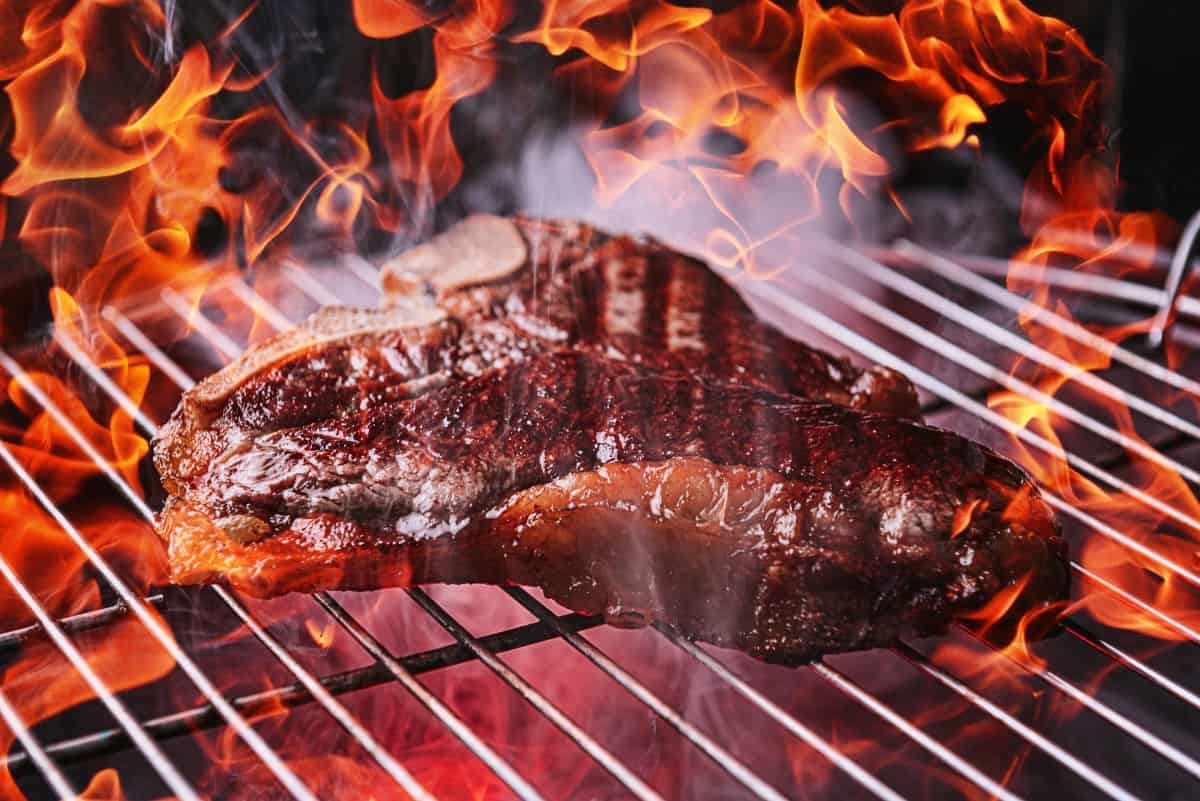
As I mentioned, most flare-ups occur on charcoal grills as soon as you place your food on the grate or flip them. Whether it is short-lived, or it creates an inferno depends on the cleanliness of the grill.
The number one reason for the fire getting out of control is a dirty grill. Not just the grill grate, but the entire fire box and walls under the grate.
To prevent the grease from building up, thoroughly scrape out the interior of your grill every time you empty the ashes.
When building your charcoal fire, leave a spot without charcoal as a safety zone to place the meat temporarily in case the flames get too big. I’ll talk about that in a moment.
Weber has a checklist on how to avoid flare-ups, and we’ve provided the key points here.
- Wipe your catch-pan: Empty and wipe the grease catch-pan or cup each time before you start grilling.
- Preheat your grill: To burn off the cooking grates.
- Brush your grates: Use a quality grill brush to scrape off any remaining burnt food or carbon.
- Apply oil sparingly: If you use oil or marinade, make sure it’s not dripping when you put it on the grill.
- Open the lid: When grilling fatty foods, leave the lid opened.
- Avoid the wind — shield the grill from the wind because it forces more oxygen into the fire, which can cause a flare-up.
The best way to avoid flare-ups on your charcoal grill is never to leave it unattended.
How To Control Flare Ups On A Charcoal Grill
Skin-on chicken and thick burgers have lots of fat that melt onto the coals and cause occasional flare-ups.
To avoid this, all you need to do is move things around and out of the flames. It’s when you leave food in the same place, dripping fat in the same spot, that flames turn into a grill fire and burn your food.
A little flame kissing the meat is a good thing. However, once the flames start to wrap around the meat, it’s time to move it to the safe zone on the grill and let the flames subside.
“Safe-Zone” Method
When cooking smaller amounts of food, setting up for two-zone cooking is the way to go. Not only does it save fuel, but you have a cold side of the grill to park your food in a “safe zone” should you need it.
Having a safe zone for your food is the smart way to grill. Otherwise, you have to grab a platter, take the food off the grill and put it back when the flames die down. That’s not always convenient, and there is a chance that you could drop everything.
Another way to reduce the chance of a flare-up is not to overbuild the fire.
Building the Right Size Fire
Unless you’re a blacksmith bending horseshoes, you don’t need a fire so hot that it warps the grill grates. Common sense tells you that it doesn’t take a giant bag of briquettes to grill two hamburgers.
Estimate the amount of grill space you’ll need to use and how long you’ll cook on it. If you’re cooking steaks for two, build a fire just a bit larger than the steaks.
If you plan on cooking burgers for a crowd, you’ll want to cover the bottom of the grill but not too deep, or you risk getting too many coals going at once. You can always add more later.
The next method can be a bit controversial.
Spray Bottle Method
For small fires, keep a spray bottle handy filled with clean water.
Simply spray a little water onto the coals that cause the flare-ups. You can see the spray technique in action with this short video.
The good thing about using this method is you don’t have to move the food, and it keeps the fire under control.
If you’re cooking in larger quantities and have a significant grease fire, you aren’t going to use this technique because you’ll make it worse.
Another reason this might not be the best method is that the spray can kick up ash onto your food. Not a condiment high on many eaters wish lists.
Cover-and-Wait Method
If the flames are high and there is no safe zone on the grill, remove the meat to a clean platter immediately. Close the lid and vents to smother the flames. However, once the flames die down, it’s not always safe to open the lid. Carefully look through the vents to see if the flames are out.
If you see lots of white smoke pouring out, that means there is still a significant amount of heat inside. If you open the lid now, you risk creating a flash fire as the oxygen rushes in and reignites the grease and the unburned particles in the smoke. There have been plenty of singed eyebrows with this careless maneuver.
Always open the lid carefully by ‘burping it’. This means only opening a couple of inches at first, standing back and with your face well away from the grill and any smoke. In case there is a ‘flashback’, you will be well out of the way.
If no flashback, open the lid fully and allow the fire to adjust and see if the flare-up has died off before returning your meat to the grill.
If the flames aren’t that serious, you can leave a thick steak on for a couple of minutes with the lid closed to give it a nice sear. Just don’t let it go too long.
For gas grills, the prevention methods are the same as charcoal grills with a couple of exceptions.
Always Be Prepared In Case It Happens to You
You should always have an extinguisher, and a good set of gloves handy every time you grill. The day will come when you forget to empty the grease tray, and flaming oil starts dripping onto your wood deck.
Be sure your grill is set up on a solid surface at least 3 feet away from anything combustible and any overhangs.
If you think grill fires are something that won’t happen to you, the NFPA (National Fire Protection Association) has some terrible statistics in their free booklet; Home Fires Involving Grills Fact Sheet. Here are three facts to keep in mind before the next time you start grilling.
- Between 2009 & 2013, U.S. fire departments responded to an average of 8,900 house fires caused by grills and barbecues.
- The result of these fires is an annual average of 10 deaths and 160 injuries.
- Gas grills caused 5 out of 6 fires.
You won’t be a statistic if you keep the grill cleaned and in good working condition. Always be prepared and have the proper safety equipment nearby.
Be safe, have fun and pass this article along to someone who can use it.
And remember, if you don’t keep your grill clean and put on a big piece of fatty meat, there’s a very real chance you could end up like this guy.
Happy grilling!


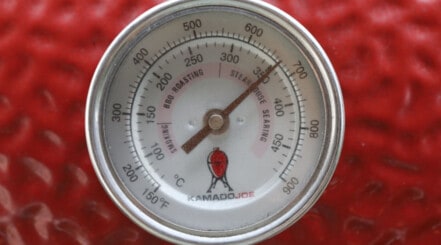
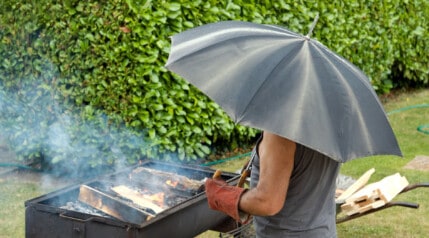
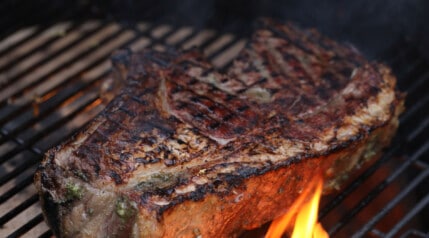

To alleviate spot flames during cooking on our Gas Grill, I’ve used “Grate Chef / FlareDown” and it’s worked well. I don’t have to use it too much.
Should I keep using that, or, is there a small amount of a non-toxic ingredient I can add to water and get the same thing?
Thanks & congrats on your articles. Very informative.
Unapprove | Reply | Quick Edit | Edit | Spam | Trash
Flare Ups: Preventing and Controlling Them on Your Charcoal or Gas Grill
I’ve never come across Flare Down before, and not sure what the ingredients are. Do you know by any chance? And no, I’m not aware of anything you can add to water to spray down flare-ups. I’d be hesitant to use anything in case it leaves a residue inside my grill (even if non-toxic and food safe) as it will just mean dirtying up my grill, even if it would all slowly burn away. I just follow the guidelines above, personally, and have always been OK. I’m not saying to not use Flare Down if it works well for you, just that I’ve never felt the need personally.
I have a gas grill is there a mat I can buy to put under my food in the grill to catch all the mess I want to keep my grill clean all I have to do is empty the mat
Hi Debbie,
Thing is, gas grills are designed with their flavorizer bars, to have drippings fall onto them, where they burn, create smoke, and add flavor. And from there, there are grease management channels that guide the fat away from the flames. It’s all a part of the process, to be expected and normal I’m afraid.
I’d be hesitant to place anything below the grates, and on top of the flavorizer bars, as it could hamper the natural flow of air and heat inside the gas grill.
THANKS. This article is so helpful. I have a super tiny charcoal grill. So many useful things for me in your article!
Good Evening,
After a Flare up, is it safe to use your bbq after that? The grill racks look a little whitish and the metal on the sides seemed to crack. Just wondering, cause might have to buy a new one.
Thanks
Hi, Hans. Each case is different, and it depends on the damage that’s been caused. You’d have to inspect everything and make a decision based on what you see. It’simpossible for me to say without seeing the grill I’m afraid.
A solution I use is to place a couple layers of aluminum foil with a bunch of quarter-inch wide slits in it under the grill. The grease drips through the slits and burns underneath the foil. No more flame touching the food. Works great!